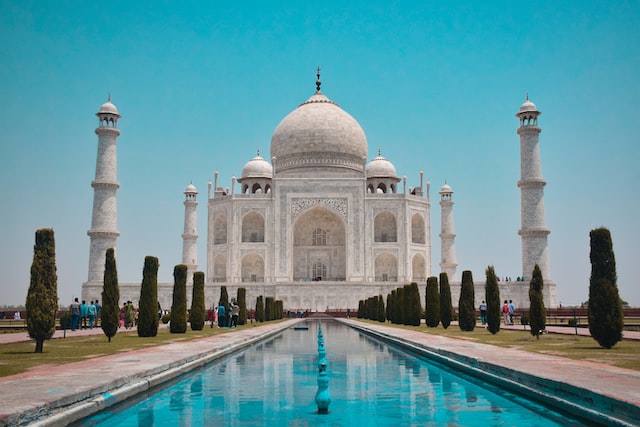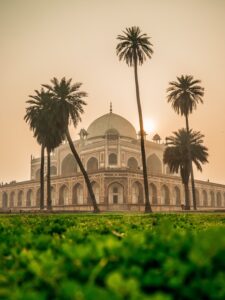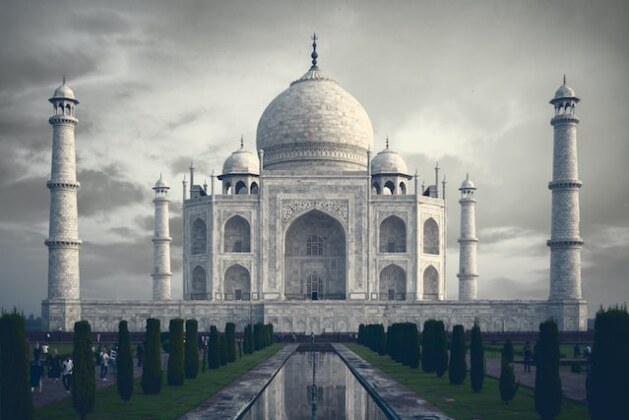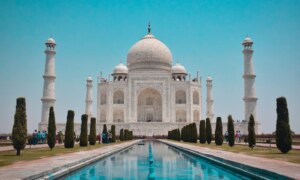Fact#1. While Taj Mahal is the most famous mausoleum in the world, there is another significant structure built for the same purpose nearby that most people are unaware of. It is believed to have been built by Shah Jahan for his own burial, but it is unclear what happened to it or why it is not as well-known as the Taj Mahal.
Fact#2. Although the Taj Mahal is known primarily as a Muslim monument, there is a small temple inside where devotees of various faiths come to worship. It is believed to have been added to the structure later on by Shah Jahan’s son Aurangzeb.
 Fact#3. Shah Jahan was known for his grand architectural projects, and the Taj Mahal was one of his most ambitious undertakings. However, some people feared that if he completed it, he would continue to build similar structures and bankrupt the empire. As a result, they believed that his hands would be cut off as a warning.
Fact#3. Shah Jahan was known for his grand architectural projects, and the Taj Mahal was one of his most ambitious undertakings. However, some people feared that if he completed it, he would continue to build similar structures and bankrupt the empire. As a result, they believed that his hands would be cut off as a warning.
Fact#4. The Taj Mahal was built as a mausoleum for Shah Jahan’s beloved wife Mumtaz Mahal, but it also holds a special significance for the couple’s wedding. Inside the structure, there is a throne above the main chamber where the two were married.
Fact#5. The Taj Mahal is an engineering marvel, and its designers took great care to ensure that it would stand the test of time. One of the ways they did this was by building the minarets slightly tilted, so that if they were to fall, they would not damage the main structure.
Fact#6. One of the unique features of the Taj Mahal is the way it manages water flow within its structure. Beneath Mumtaz Mahal’s tomb, there is an open space where water that collects is drained beneath her feet, symbolizing the importance of water in Islamic culture.
Fact#7. The Taj Mahal is a massive undertaking, and it took a huge workforce to complete. Shah Jahan employed over 20,000 workers to begin construction, including craftsmen, laborers, and architects.
 Fact#8. The Taj Mahal is not only a monument to love, but it is also a symbol of Islamic architecture and culture. Inside the structure, there are 99 names of Allah inscribed on the walls, taken from the Quran.
Fact#8. The Taj Mahal is not only a monument to love, but it is also a symbol of Islamic architecture and culture. Inside the structure, there are 99 names of Allah inscribed on the walls, taken from the Quran.
Fact#9. The Taj Mahal was built in the 17th century, long before the invention of modern machinery. As a result, all the work inside the structure was done by hand, including the intricate carvings and designs.
Fact#10. The white marble used to build the Taj Mahal is considered to be one of the purest forms of white marble in the world. It was quarried from Rajasthan and polished with gold to give it a brilliant sheen.
Fact#11. The Taj Mahal is a treasure trove of precious stones and jewels, many of which are embedded in the walls of the structure. However, they are not visible to the public as they have been concealed and protected from damage and theft over the years.
Think you’re an expert on the Taj Mahal now? Put your knowledge to the test with our 11 general knowledge questions about this incredible wonder of the world. Challenge yourself and see if you can answer all 11 questions correctly!


Leave a comment